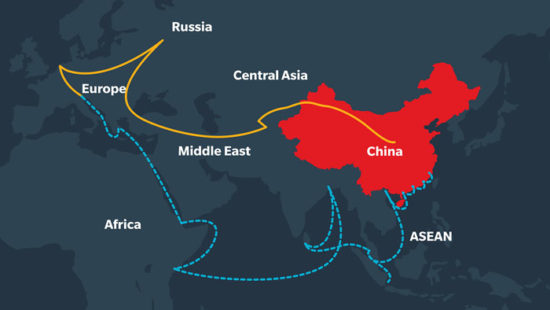For centuries, Central Asia served as the beating heart of global trade—its ancient Silk Road routes connecting empires from China to Europe. Today, the region finds itself once again at the center of geopolitical attention, thanks to China’s Belt and Road Initiative (BRI). Explore how China’s Belt and Road Initiative (BRI) is reshaping Central Asia’s infrastructure and global trade economy—and whether it fosters prosperity or deepens reliance.
With promises of infrastructure development, new trade corridors, and cross-border cooperation, China’s influence in countries like Kazakhstan, Uzbekistan, Kyrgyzstan, Tajikistan, and Turkmenistan has grown steadily. But the question remains: Is the BRI a long-awaited economic revival for Central Asia, or a modern route to economic dependence?
This blog explores the evolving role of the BRI in Central Asia’s development, featuring data-backed insights and expert commentary from global procurement strategist Mattias Knutsson.
Infrastructure Investments: Roads, Rails, and More
Since 2013, China has poured billions into Central Asia:
- Khorgos Gateway (Kazakhstan): A dry port that now rivals seaports in trade volume.
- China-Kyrgyzstan-Uzbekistan railway: An ongoing mega-project designed to streamline Eurasian freight.
- Dushanbe-Chanak Highway (Tajikistan): A modern highway replacing Soviet-era infrastructure.
- Pipelines and power plants: Enhancing energy export and domestic access.
These investments have improved logistics, reduced trade times, and boosted regional integration.
BRI Trade Economic Impact: Boon or Burden?
According to the World Bank:
- BRI infrastructure could increase exports from Central Asia by 30%.
- GDP in some BRI-involved Central Asian countries could see a 2–3% uplift over a decade.
However, IMF data also shows rising debt exposure:
- Tajikistan owes over 40% of external debt to China.
- Kyrgyzstan’s reliance on Chinese loans has triggered debt-sustainability concerns.
While new roads and railways stimulate commerce, the terms of financing and long-term obligations remain under scrutiny.
Strategic Leverage or Shared Growth?
Central Asia’s location offers China:
- A shortcut to European markets
- Energy transit routes bypassing volatile regions
- An alternative to maritime chokepoints like the Strait of Malacca
But critics argue that:
- Local industries remain underdeveloped, with Chinese contractors dominating.
- Projects often employ Chinese labor and materials, limiting local economic benefits.
- Governance standards and environmental oversight are often weak or bypassed.
In some cases, like in Kyrgyzstan’s controversial Datka-Kemin transmission line, local protests over transparency and land rights have surfaced.
Regional Responses: Mixed Receptions
- Kazakhstan has embraced the BRI as part of its Nurly Zhol economic program, promoting synergy with domestic growth plans.
- Uzbekistan has cautiously welcomed Chinese investment while also diversifying partnerships with Europe and the U.S.
- Tajikistan and Kyrgyzstan, while heavily reliant on BRI funding, have seen civil society pushback on land use and debt.
These varied responses reflect a deeper tension: the need for investment vs. the desire for autonomy.
Mattias Knutsson’s Insight: Empowerment Through Partnership
Mattias Knutsson, known for his strategic leadership in global procurement and development, frames the BRI-Central Asia relationship as a moment of great possibility:
“Central Asia’s geography is its advantage—but only if matched with economic self-determination. The Belt and Road should be a springboard, not a lifeline.”
Knutsson emphasizes the importance of:
- Transparent procurement and competitive bidding
- Local workforce inclusion in BRI projects
- Long-term knowledge transfer and infrastructure sustainability
He adds, “True development is measured not in kilometers of rail, but in independence retained after the trains arrive.”
Conclusion:
The Belt and Road Initiative offers Central Asia a historic opportunity to reconnect with the world. New trade routes, faster logistics, and foreign investment are reshaping a region once overlooked.
But the success of the BRI will depend on how it’s implemented—and who it truly empowers. Central Asia must navigate this path with strategic clarity, ensuring it does not trade sovereignty for infrastructure.
If the region can assert its terms, develop its industries, and hold partners accountable, then the BRI may not only revive trade—it may redefine independence.





